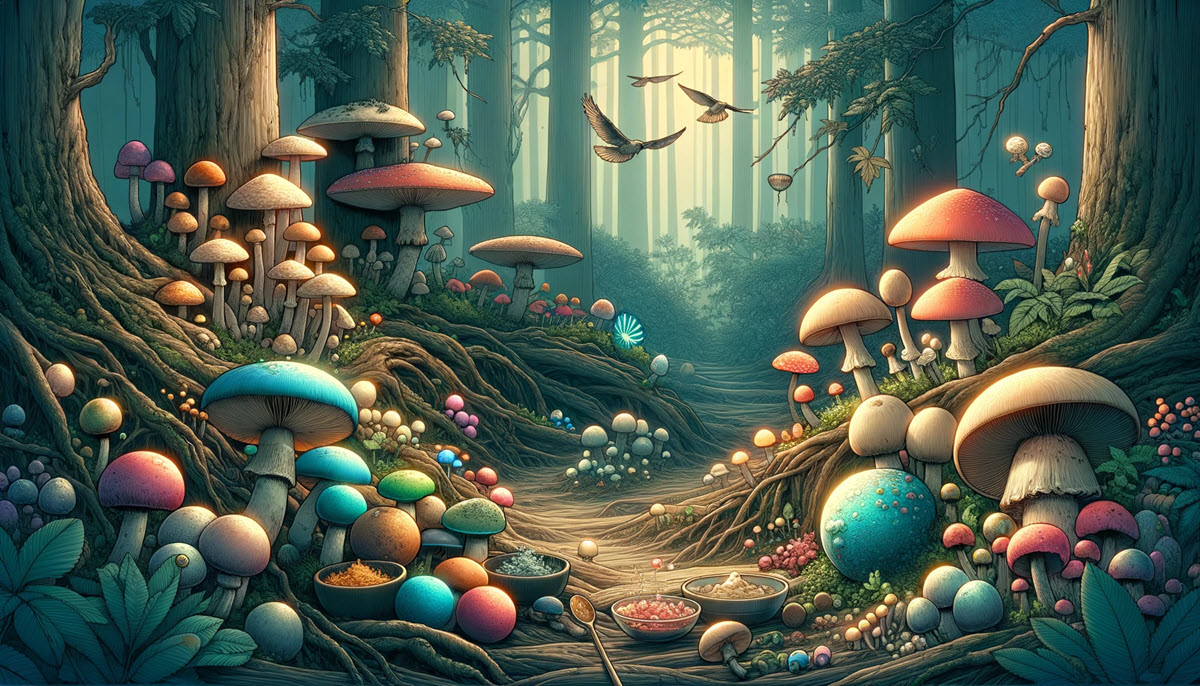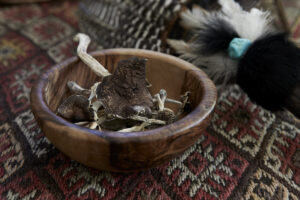Why settle for the mundane when the world of agaricales, including agarics, edible mushrooms, arbuscular mycorrhizae, and rot fungi, awaits? These fungi, more commonly known as mushrooms, are not just a culinary delight but a fascinating subject for anyone curious about the natural world. From their intricate life cycles to their diverse habitats, agaricales offer a glimpse into a realm teeming with mystery and wonder. This post will guide you through the essentials of agaricales, shedding light on their significance both in nature and in our lives. Whether you’re a seasoned mycologist or simply someone with an appetite for learning, prepare to be enthralled by the captivating world of these remarkable organisms.
Key Takeaways
- Understanding Agaricales is crucial for both mycologists and enthusiasts, as this order includes both edible and psychoactive mushrooms, impacting ecosystems and human culture.
- Recognizing the distribution patterns of Agaricales can help in identifying potential areas for foraging, conservation efforts, and scientific research.
- The uncertainties surrounding Agaricales genera highlight the importance of ongoing research and the need for citizen scientists to contribute to the growing body of knowledge.
- Agaricales play a significant role in ecosystems by decomposing organic matter, which underscores the importance of preserving their habitats for ecological balance.
- Learning to identify Agaricales correctly is essential for safety and for taking advantage of their various uses, from culinary to medicinal.
- The relationship between Psilocybin and certain Agaricales species opens discussions on the therapeutic potential of psychedelics, emphasizing the need for informed and responsible exploration.
Agaricales Overview
History Insight
Agaricales, or agarics, have been around since ancient times. Ancient civilizations recognized their value in traditional medicine. They used them for healing and spiritual purposes. The study of these fascinating fungi, including various mushroom species and their fruit bodies across different genus, has seen significant figures and milestones over the centuries.
One key figure was Carolus Linnaeus, who laid the groundwork for modern taxonomy in the 18th century. He was among the first to attempt classifying these organisms, grouping fungus bodies into a genus. Since then, the classification of Agaricales has evolved dramatically. It moved from simple morphological observations to sophisticated genetic methods. This evolution marks a significant leap in our understanding of fungal biology.
Classification Basics
Agaricales forms a large and diverse order within the fungal kingdom, encompassing various genus groups including those known for white rot fungus. It includes many species commonly known as mushrooms. These fungi play crucial roles in ecosystems by decomposing organic matter.
The order encompasses several major families and genera, such as Agaricaceae, Amanitaceae, and Pleurotaceae. Classifying species within Agaricales relies on various criteria. These include spore color, gill attachment, and cap shape. Researchers continually refine these criteria, including fungus, wood distribution, and stipes, to reflect a deeper understanding of relationships among species.
Phylogeny Explained
Phylogenetics is vital for unraveling the evolutionary history of Agaricales, including aspects related to stipes, wood, and white rot. It helps scientists understand how different species are related to each other. Recent advancements in molecular biology have provided new insights into these relationships.
Studies using DNA sequencing have significantly altered our view of Agaricales taxonomy. They reveal complex genetic relationships that were previously unknown. This molecular data has led to a more accurate classification system, known as Agaricales sensu lato. It reflects a more nuanced perspective on how these organisms evolved over time.
Distribution Patterns
Global Presence
Agaricales, a large order of fungi, spans across the globe. Their distribution is widespread, touching almost every continent. Regions like the Amazon Basin and Southeast Asia stand out for their incredible diversity. These areas are hotspots for Agaricales species due to their warm, moist climates and abundant wood.
Climate plays a crucial role in shaping their global presence. Factors such as temperature and humidity greatly influence where these fungi can thrive. As climate change alters these conditions, we see shifts in the distribution patterns of Agaricales. Some species expand into new areas, while others face decline. This movement underscores the dynamic nature of their global distribution.
Habitat Diversity
Agaricales demonstrate remarkable adaptability to various habitats. They populate dense forests, grasslands, and even urban settings. Their ability to thrive in diverse environments speaks to their ecological versatility.
Forests are particularly significant for Agaricales due to the symbiotic relationships they form with trees. Yet, their adaptability allows them to colonize new habitats with ease. Urban parks and gardens can also host these fungi, showcasing their resilience in faced with environmental changes.
The role of Agaricales in ecosystems cannot be overstated. They contribute to nutrient cycling and soil formation, acting as vital components of many ecosystems. From decomposing organic matter in forests to forming mutualistic associations with plants, Agaricales play multiple roles that enhance ecosystem health.
Genera Uncertainties
Incertae sedis Overview
In the realm of mycology, ‘Incertae sedis’ is a term that signifies uncertainty. It marks genera or species whose taxonomic placement within a family remains unclear. This status plays a critical role in the classification of Agaricales, highlighting the complexity and ongoing evolution of fungal taxonomy.
Various Agaricales species are currently classified as Incertae sedis. These include obscure or lesser-known fungi that defy easy categorization. Their unique characteristics challenge traditional classification systems, leading to their interim status.
The challenges in resolving the taxonomic placement of these species are manifold. Researchers rely on morphological analysis and genetic data to draw connections between species. However, incomplete genetic information and morphological variability complicate this process. Despite these hurdles, ongoing efforts aim to clarify these uncertainties. Scientists use advanced genetic sequencing techniques to gather more data on these elusive species. Their goal is to achieve a more accurate and comprehensive understanding of Agaricales diversity.
These efforts are not just academic exercises. They have practical implications for conservation strategies and understanding ecosystem dynamics. By clarifying the relationships between different fungi, researchers can better predict their roles in ecosystems and their responses to environmental changes.
Agaricales in Ecosystems
Ecological Roles
Agaricales, a diverse order of fungi, play crucial roles in ecosystems. They act as decomposers, breaking down dead organic matter. This process releases nutrients back into the soil, vital for plant growth.
They excel in nutrient cycling and soil formation. By decomposing organic material, Agaricales help create rich, fertile soil. This is essential for healthy plant life and agriculture.
Symbiotic relationships between Agaricales and plants are key to enhancing plant growth. These fungi exchange nutrients with plants, aiding their survival in challenging environments.
Symbiotic Relationships
Agaricales form mycorrhizal associations with plants. This symbiosis allows plants to absorb water and nutrients more efficiently. In return, the fungi receive sugars produced by the plants through photosynthesis.
These relationships contribute to ecosystem health and biodiversity. They improve soil structure and increase water retention. Mycorrhizal networks also facilitate communication between plants, warning them of pests or diseases.
Examples of Agaricales involved in ant-fungal and other animal-fungal symbioses are fascinating. Certain species engage in mutualistic interactions with insects, providing them shelter or food in exchange for spore dispersal.
Identifying Agaricales
Morphological Features
Agaricales, a large order of fungi, are primarily identified by their gill structure and spore color. These features play a crucial role in species identification and classification. The gills, located under the cap, vary significantly across different species. They can be tightly packed or spaced apart, with colors ranging from white to dark brown.
Spore color offers another key identification marker. It ranges from white to jet black, providing vital clues about the species. This diversity in spore color is essential for classifying Agaricales into various families and genera.
Size, shape, and color among Agaricales species also show remarkable diversity. Caps can be small as a dime or large as a dinner plate. Their shapes may vary from flat to conical. The colors are just as varied, with hues spanning across the spectrum. This morphological diversity highlights the richness of the Agaricales order, making it one of the most fascinating groups of fungi to study.
Common Species
Several well-known Agaricales species stand out for their unique characteristics and importance. The button mushroom (Agaricus bisporus), for instance, is renowned for its culinary uses. Its white cap and firm texture make it a favorite worldwide.
The fly agaric (Amanita muscaria), with its iconic red cap and white spots, is another notable species. Though poisonous if consumed raw, it plays a significant role in forest ecosystems by forming symbiotic relationships with trees.
The shiitake mushroom (Lentinula edodes) is not only prized for its rich flavor but also for its medicinal properties. It’s cultivated globally and contributes significantly to the economy of many countries.
Within the Agaricales order, there exists a clear divide between edible and poisonous species. For example, while the oyster mushroom (Pleurotus ostreatus) is widely consumed for its nutritional benefits, others like the death cap (Amanita phalloides) are deadly poisonous and must be avoided at all costs.
Identifying Agaricales involves understanding their morphological features and knowing common species along with their ecological roles or economic value. Whether they’re enhancing forest health or enriching our diets, these fungi play integral roles in nature and human life alike.
Psilocybin and Agaricales
Therapeutic Uses
Researchers have long studied Agaricales, a diverse order within the phylum Basidiomycota, for their remarkable therapeutic properties. This group includes both edible mushrooms and those with potent medicinal qualities. Among them, certain species stand out for their health benefits, driven by compounds that show promise in treating various ailments.
One notable example is the use of psilocybin-containing mushrooms. These fungi have been part of traditional medicine for centuries, offering relief from mental health conditions. Recent studies back up these traditional uses, showing psilocybin’s potential to treat depression and anxiety. Scientists are also exploring extracts from other Agaricales species for their anti-inflammatory and anticancer properties.
Ongoing research continues to uncover how Agaricales compounds can be harnessed medically. For instance, compounds from edible mushroom varieties are being investigated for their ability to boost immune system function. The goal is to fully understand these natural products’ mechanisms of action and develop new treatments.
Research Advances
The field of Agaricales research has seen significant advances in recent years, thanks to improvements in genetic analysis and ecological understanding. Researchers now have tools like DNA sequencing at their disposal, allowing them to delve deeper into the genetics of these fungi. This technology has led to breakthroughs in identifying new species and understanding the complex relationships between fungi and their environments.
Technological advancements have also opened up new avenues in pharmacology studies. Scientists can isolate specific compounds from mushrooms more efficiently, speeding up the process of drug development. Moreover, interdisciplinary studies leverage Agaricales in innovative ways, such as using fungi for bioremediation or as sustainable materials in biotechnology.
One exciting area of exploration involves understanding how ectomycorrhizal relationships between mushrooms and plants can be applied to agriculture. By harnessing these natural partnerships, researchers aim to develop more sustainable farming practices.
Project Circle Introduction
Consultation Services
Our expert consultation services are designed to support enthusiasts and professionals in the fields of Agaricales cultivation, identification, and conservation. We offer guidance from seasoned mycologists who bring years of research and fieldwork experience to the table. These services cater to a wide range of needs, from agricultural optimization to environmental studies.
Consulting with experts can significantly benefit projects focusing on agriculture, environment, and health. Mycologists provide invaluable insights into the effective cultivation of Agaricales, which can enhance crop yields and sustainability. For environmental projects, their expertise aids in understanding the ecological roles of fungi and devising strategies for their conservation.
Moreover, our services play a crucial role in sustainable harvesting practices. They ensure that Agaricales populations remain healthy and diverse. This is essential for maintaining biodiversity and ecosystem balance.
Psilocybin Therapy Benefits
The therapeutic potential of psilocybin-containing Agaricales species has garnered significant attention in recent years. Research suggests that psilocybin therapy can offer breakthrough treatments for various mental health disorders, including depression, anxiety, and PTSD. Clinical studies have shown promising results, indicating that psilocybin can facilitate profound psychological healing.
Regulatory changes are reflecting these findings as well. Several regions have begun to reassess legal restrictions on psilocybin use for therapeutic purposes. This shift is largely due to growing evidence of its efficacy and safety under professional supervision.
ietal attitudes towards psilocybin as a therapeutic agent are also changing. There’s an increasing acceptance of its potential benefits in mental health care. This evolution in perspective is crucial for advancing research and expanding access to psilocybin therapy for those in need.
Booking Your Consultation
Easy Steps
For beginners eager to dive into the world of Agaricales, whether it’s for identification, cultivation, or culinary adventures, starting can be as simple as following a few practical steps. First, equip yourself with a good field guide specific to fungi or Agaricales. This will be your bible in understanding the vast diversity within this order.
Next, consider joining a local mycology club or community. Here, you’ll find mentors and enthusiasts who can share invaluable insights and perhaps even take you on guided foraging trips. These experiences are crucial in learning safe foraging practices and how to distinguish between edible and poisonous species of Agaricales.
Lastly, leverage online resources such as forums, courses, and webinars dedicated to mycology. They offer a treasure trove of information and can significantly accelerate your learning curve.
What to Expect
Venturing into Agaricales cultivation or foraging comes with its set of expectations and realities. For starters, patience is key. Growing mushrooms or finding them in the wild doesn’t happen overnight. It requires time, observation, and sometimes trial and error before you see success.
One common challenge many face is distinguishing between edible and poisonous species. This is where your research and connections within the mycology community become vital. Learning from experienced foragers or cultivators can help mitigate risks and boost your confidence.
Despite these challenges, the rewards are plentiful. Engaging with the Agaricales community opens up avenues for education not just about fungi but also about ecosystems at large. Culinary enthusiasts will discover new flavors and textures to experiment with in their cooking. The sense of accomplishment from successfully identifying or cultivating your first mushroom is unmatched.
Success Stories
Testimonials
People from different walks of life have found remarkable benefits in incorporating Agaricales into their lives. A nutritionist shared how introducing Agaricales mushrooms into diets has significantly improved clients’ health, leading to better digestion and immunity. Another story comes from a farmer who used these fungi for soil health, witnessing a dramatic increase in crop yield.
Researchers highlight the critical role of Agaricales in bioremediation projects. They have successfully utilized these fungi to cleanse soils contaminated with heavy metals, showcasing their environmental impact. These testimonials underline the versatile and powerful nature of Agaricales, both in human health and ecological restoration.
Transformative Experiences
Engaging with Agaricales has led to profound changes on personal and societal levels. Many individuals recount their therapeutic experiences with certain species of Agaricales, describing them as life-changing. They speak of enhanced mental clarity, emotional healing, and a deeper connection with the natural world.
In various cultures, Agaricales play a pivotal role in ceremonies and spiritual practices. One notable example is the use of sacred mushrooms in indigenous rituals to foster community bonds and facilitate spiritual journeys. Such practices underscore the deep-rooted connection between humans and these important members of the fungal kingdom.
Final Remarks
Agaricales, a diverse and fascinating group, play crucial roles in ecosystems worldwide. We’ve explored their distribution, identified genera uncertainties, and highlighted their significance in nature. Understanding Agaricales helps you appreciate the delicate balance of our ecosystems. Psilocybin research opens new doors for mental health treatment, showing how these mushrooms hold potential beyond their ecological contributions. Project Circle introduces a unique way to engage with Agaricales, offering personalized consultations for those eager to dive deeper.
Ready to explore the world of Agaricales further? Book your consultation today and join our community of success stories. Let’s embark on this journey together, uncovering the mysteries and opportunities that Agaricales present. Your adventure into the realm of fungi starts now.
Frequently Asked Questions
What are Agaricales?
Agaricales are an order of mushrooms that includes both edible and poisonous species, known for their gilled mushrooms which play a crucial role in ecosystems by decomposing organic matter.
Where can I find Agaricales?
Agaricales are distributed worldwide, thriving in various habitats from woodlands to grasslands. Their presence is vital for nutrient cycling within these ecosystems.
Are all Agaricales genera clearly defined?
No, there are uncertainties regarding some genera within the Agaricales due to overlapping characteristics and genetic variability, making classification challenging.
How do Agaricales benefit ecosystems?
Agaricales contribute significantly to ecosystems by decomposing dead organic material, thus recycling nutrients back into the soil and supporting plant growth.
How can I identify Agaricales mushrooms?
Identifying Agaricales involves examining physical characteristics such as cap shape, color, gills, and spore print. However, expert consultation is recommended for accurate identification due to the presence of poisonous species.
What is the connection between Psilocybin and Agaricales?
e Agaricales species produce psilocybin, a compound with psychoactive properties. These mushrooms have been studied for their potential therapeutic benefits in mental health treatment.
What is Project Circle?
Project Circle is an initiative aimed at educating individuals about the importance of Agaricales in our ecosystems and how to safely identify and appreciate these fungi.




